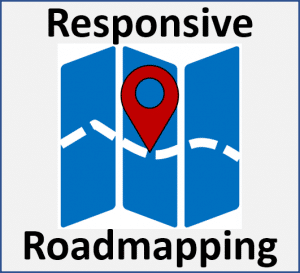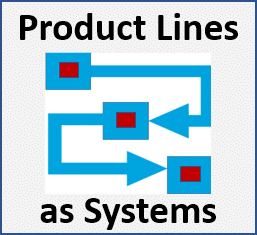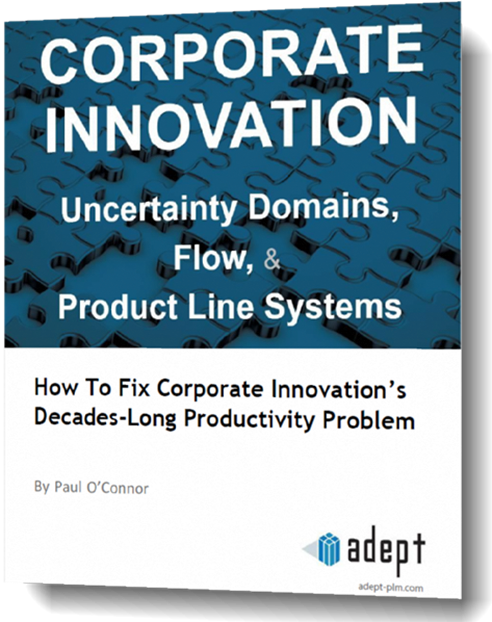Noun-Based vs. Verb-Based Market Segments
Orienting Product Line Strategies with Jobs-to-be-Done Thinking
I bet you’ve never heard there’s a difference between Noun-Based and Verb-Based market segments. The notion of Verb-Based market segments sounds more like slick branding, not a valuable tool. But I hope to prove that wrong.
Forever, managers have divided whole industries using Noun-Based segmentation. When you buy a market research study, it’ll break down an industry and its markets by Noun-Based segments. The challenge is that driving greater value from innovation and product development demands we complement the noun approach with verbs.
OK, I will not get all ‘English major’ on you. Please stick with me. I think you’ll this both insightful and helpful.
Traditional Noun-Based Market Segments
Think about market segments for a moment. Name a segment or two that get talked about in your company. Or consider a segment you’ve studied. Chances are these are Noun-Based. You’ll see traditional segmentation schemes like geographies, demographics, and psychographics, which are taught in business school, are all Noun-Based. You may also hear segments tagged as product types or user titles. These are also Noun-Based.
There’s nothing wrong with traditional Noun-Based segmentation. It’s been a cornerstone of good marketing and selling for decades. You’ll recognize how most sales forces divide their efforts by noun-based segments. And yes, it’s also vital for product developers to know if a Noun-Based segment is growing. They’ll also want to know how satisfied customers are and what competitors are doing within each segment. You don’t want to mess up your approach toward Noun-Based segments like the Chinese Market during a trade war or the UK during its Brexit fiasco. The problem is that, beyond these fundamental insights, developers gain little from dividing customers into groups defined by nouns. You must dig deeper if you want more.
Verb-Based Market Segments
A probe into Verb-Based segmentation is precisely the digging that developers need. It’s a way of describing how Jobs-to-be-Done divides markets. It’s based on a customer’s wish to carry out activities or make progress toward an outcome. Jobs-to-be-Done builds on the notion that people don’t buy products. Instead, people hire products to do a job. It’s the action to get jobs done that suggests the verb vs noun distinction.
If you shift your view toward buying products, you’ll end up with traditional Noun-Based segments. When you embrace the hiring products to get a job done, you’ll land on a Verb-Based approach.
The big deal for developers is that the Verb-Based actions tie directly to the outcomes that customers want. These outcomes become targets for product attributes. Verb-Based segments are clusters of customers who wish to hire products to produce common outcomes. Developers who know the Verb-Based groups also know the product attributes that will deliver those outcomes. Traditional Noun-Based segments don’t do that. They leave developers hanging.
The issue is that creating products is not the same as selling products. Yet, many managers don’t consider how segmenting affects their efforts. To them, everything starts and ends with selling. You’ll notice how people work their tails off positioning products to sell more, and they organize entire companies to improve sales. To the marketing and salespeople, a company’s primary mission is to sell.
Verb-Based Market Segments
A probe into Verb-Based segmentation is precisely the digging that developers need. It’s a way of describing how Jobs-to-be-Done divides markets. It’s based on a customer’s wish to carry out activities or make progress toward an outcome. Jobs-to-be-Done builds on the notion that people don’t buy products. Instead, people hire products to do a job. It’s the action to get jobs done that suggests the verb vs noun distinction.
If you shift your view toward buying products, you’ll end up with traditional Noun-Based segments. When you embrace the hiring products to get a job done, you’ll land on a Verb-Based approach.
The big deal for developers is that the Verb-Based actions tie directly to the outcomes that customers want. These outcomes become targets for product attributes. Verb-Based segments are clusters of customers who wish to hire products to produce common outcomes. Developers who know the Verb-Based groups also know the product attributes that will deliver those outcomes. Traditional Noun-Based segments don’t do that. They leave developers hanging.
The issue is that creating products is not the same as selling products. Yet, many managers don’t consider how segmenting affects their efforts. To them, everything starts and ends with selling. You’ll notice how people work their tails off positioning products to sell more, and they organize entire companies to improve sales. To the marketing and salespeople, a company’s primary mission is to sell.
Advance Your Product Line
In the real world, it’s enormously helpful to create new offerings that sell themselves. Peter Drucker famously said that product development should put the sales force out of work. This is where we need the split between Noun-Based and Verb-Based segmentation. Marketing and selling demand a focus on Noun-Based segments. Product development needs insightful Verb-Based segments.
Notice the problem when developers begin with Noun-Based segments. They must also carry out research to find opportunities. It starts by using logic. Unfortunately, such logic rests on hope and luck.
We don’t create noun-based segments based on our knowledge of specific opportunities. Instead, we pick a noun-base segment and then use voice-of-the-customer within it to find an opportunity. The problem is such developments won’t deliver the greatest impact. Too often, the work results in one-off hits that lack coordination with higher-level goals.
A Verb-Based mindset shifts how a company develops products. Most notably, it changes how businesses advance their product lines. But companies must pursue these gains deliberately. The task is more than getting people to read a few books or attend training sessions. You need to dig in and make a meaningful investment. That starts by researching the jobs that customers want to be done and what it takes to deliver excellent outcomes. It also demands intelligent analytics with enough data to figure out the Verb-Based segments. Each segment is a mathematically derived cluster of job outcomes.
The Jobs Worth Doing
Consider these four tasks if you wish to gain the most from Verb-Based segments. They are not obvious to everyone.
- Figuring Job Outcomes
First, you must figure out how to layout and measure customer jobs and the outcomes customers are seeking. Specifically, it’s the measure of progress toward getting jobs done better. To get your mind around the task, consider that markets (all segments together) can have over one hundred desired outcomes needing to be measured. And the measures will capture the customer’s wish to do the job faster, more reliably, and more efficiently. That’s big data. The good news is it opens many opportunities. Plus, the data are enduring. That makes this Verb-Based data an asset, not an expense.
- Calculating Outcome Clusters
Next, you must calculate job outcome clusters to define each Verb-Based segment. The key is a technique called ‘multi-variate cluster analysis’ on the large data set. Don’t get scared by the technique’s name. It’s used in empirical research all the time. There are nuances to the approach, so don’t expect a plug-and-chug answer to pop out. Knowledgeable managers will need to spot the logic behind each cluster. They need to rationalize why the outcomes form the clusters. This is because a few dominant outcomes tie together. You can then tag the Verb-Based cluster with a name that captures these outcomes.
- Putting the Data to Work
There’s a big difference between having Verb-Based market data and using it. Many companies slip up here. It’s because there are a couple of paths you can take. The choice is to use the Jobs outcome data to help improve an existing product or a development project underway. Or it’s using the data to start up a new project from scratch. Most choose to help with a development project that’s underway or to recast an existing product. Unfortunately, that can cause conflict with noun-based approaches. This conflict doesn’t help when working to introduce Jobs’ outcome data.
The better approach uses the data to start up one or more new projects. It’s translating outcome clusters into targets for potential products. It’s also about laying out product features that match a Verb-Based segment. The key is doing this repeatedly, and that demands companies build the practices and tools that pull value from the data.
- Ramping Up Product Line Strategies
Companies also gain by using Verb-Based segments to help form product line strategies. This is the game plan for multiple products, not just one development. It’s also where Verb-Based segmentation shines. The idea is to use the Verb-Based clusters to complement traditional Noun-based segments, not replace them. And when competitors stick only to Noun-Based segmentation, your product line will develop a distinct advantage. There’s a simple reason. You’re basing your developments on what customers want, not who they are.
- Attribute Targeting
Once Verb-Based segments are set up, product line teams then use the outcome sets to form targets for concept development. This task comes before conjuring up concepts and products.. The targets, also known as Innovation Charters, create guidance toward better outcomes without declaring what the results will be.
Each set of jobs-to-be-done outcomes is a vital component within a charter. Other components address the why and how of any potential innovation or development. Just as a company manages a portfolio of development projects, they should also manage a portfolio of innovation charters.
Verbs connected to Nouns
By giving the Verb-Based title to Job-to-be-Done segments, I hope to draw a sharp contrast with traditional, Noun-Based segments. We must give credit to the Job-to-be-Done experts that figured out its theory and underpinnings. The challenge, though, is to gain value from the Verb-Based approach. This work demands practitioners step up and make the needed investment. Don’t expect a free lunch here. An investment into verb-based segmentation is more like a self-sustaining farm that continuously feeds you healthy meals.
If you wish to spot Verb- and Noun-based segments in action, consider the product line roadmap in Figures 1 and 2 below. This is a B2B case, and the product line provides building materials to the construction market. The market swim lane in the roadmap at the top of the diagram has two rows. One for Noun-based Segments, and the other for Verb-Based Segments.
Figure 1. A full view of a product line roadmap (happy to share if you contact me.)
Figure 2. Close up, detail view of Market Segment Swim lane within Product Line Roadmap
The roadmap diagram has two rows within the market segment swim lane.
The Noun-Based row shows segments like residential home building and apartment construction. This view is the traditional segmentation carried out by teams for many decades.
The Verb-Based row is different. It reflects desired outcomes, like resisting fire and blocking sound. The title doesn’t mean the Job outcome stands on its own. Instead, the cluster analysis will show several outcomes tied together. This title reflects the primary outcome, making it easier to diagram and discuss.
The key to the roadmap and the strategy is linking outcome clusters to products. Product line roadmaps show products in one of three states. They may be products in the market (PIMs). They could also be products in development (PIDs). Or they can be targets for new products called product innovation charters (PICs).
The Product Line Roadmap
The roadmap diagram also shows how the products (and their features) associate with Verb-based segments. Or, better stated, the desired product features of a product linked directly to the outcome set within a Verb-Based segment.
Products show up on the roadmap in one of three states. The first is the product-in-the-market (PIMs – think existing SKUs). The second is the product-in-development (PIDs- think Agile/Waterfall development projects.) And the third is the target for a new product called a product-innovation-charters (PICs- think targets for front-end concept generation).
Verb-Based Innovation Target
Once you understand the PIC, you’ll be well-prepared to tackle Verb-Based influence on PIMs and PIDs. The PIC has much research to support its use and has been in practice for several decades. What’s new is matching the PIC to strategy and adding Verb-Based outcomes. These additions remove much uncertainty from PICs, making them vital to good product line practices. If you fulfill a PIC, you’ll likely have a successful product.
Please recognize that even the most excellent Verb-Based understanding won’t solve UX or design issues. It won’t tell you how to best bundle technologies into a product. And it won’t deliver the most effective platform-lever. You’ll still need hard work and genius to produce these results. But the advantage is that Verb-Based segmentation makes these tasks easier. And it gives you a way to understand what genius is and isn’t. That goes a long way toward driving success.
My goal here has been to build your awareness of Verb-Based segments in contrast to traditional Noun-based segments. We can thank those who discovered and shaped Jobs-to-be-Done theory for giving us this powerful view. I give much credit to Tony Ulwick and his firm Strategyn. Tony and his team teach the topic and assist companies in carrying out much-needed work. Product line teams then need to combine their knowledge with insights gained from Job-to-be-Done segmentation and Product Line Systems. There’s much to be gained.
Empowering Strategies
It’s exciting to see the positive impact of Jobs-to-be-Done outcome clusters on a new product. But the true power of Verb-based segmentation becomes apparent when teams use the segmentation approach to plan multi-product strategic moves. Such moves include actions like incrementally advancing the line, changing platform-levers, or pivoting the entire line. You’ll find outcome clusters embedded into innovation charters to be crucial for making these moves succeed.
The good news for strategies and product planning is that well-defined Verb-Based segments assure that opportunities exist, and projects aren’t betting on luck.
From a different perspective, you’ll see the Verb-Based approach also helps minimize lost opportunities. In strategy, we refer to such lost opportunities as type-2 errors. Teams avoid such errors because smart Verb-Based analytics reveal the gaps in customer need satisfaction.
Spotting such gaps within desired Jobs-to-be-Done outcomes need not be a guessing game. The opportunity is then couched in how best to deliver product features that fill the gap. With these insights, the act of skipping an opportunity is a deliberate choice, not an oversight.
Results: Much Better Than Luck
Product line managers can produce powerful results when they use Verb-Based segmentation. It’s because we define Verb-Based segments by the jobs that customers need to do. This assures us that opportunities exist in the segments. That means we aren’t betting on luck.
There are a two other benefits that accrue from the Jobs-to-be-Done orientation. You’ll find that Verb-based segmentation minimize lost opportunities. It does this by pinpointing where the opportunities live. You need not guess.
Product line strategies also gain from verb-based segmentation because it works to squash competitors. Those industry players locked into the Noun-Based approach become sitting ducks on a competitive landscape.
Adding Verbs to Nouns
The title “Verb-Based” given to Jobs-to-be-Done segments is purposeful. It draws a contrast with traditional, old fashion Noun-Based segments. Credit must be given to the Jobs-to-be-Done experts that figured out its underpinnings.1,2
My goal is to build your awareness of Verb-Based segments in contrast to traditional Noun-based segments. You don’t need to be an expert in the topic. But you need to combine your product knowledge with Jobs-to-be-Done and Product Line Systems Management. There’s much to be gained.
Don’t expect a free lunch. Verb-Based segmentation is more like a self-sustaining farm that continually feeds you healthy meals, not a single free lunch! Remember though, if you wish to gain value from Verb-Based segmentation, you must step up and make the needed investments.
Learn More and Take Action
To learn more about how Verb-Based market segments drive powerful product line strategies, consider several of Adept’s venues. We focus on Product Line Strategies, Front-end Targeting, and Responsive Roadmapping. These building blocks can be critical to product development excellence.
More Resources
Here are three short online courses to help you and your colleagues learn the topic and take action to improve your company’s product development and management performance.
- Jobs to be Done: Theory to Practice by Anthony Ulwick
- Competing Against Luck: The Story of Innovation and Customer Choice; HarperCollins by Clayton M. Christensen, Karen Dillon, Taddy Hall, David S. Duncan











